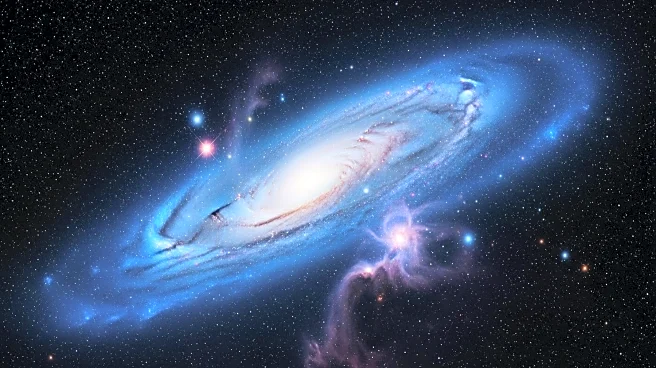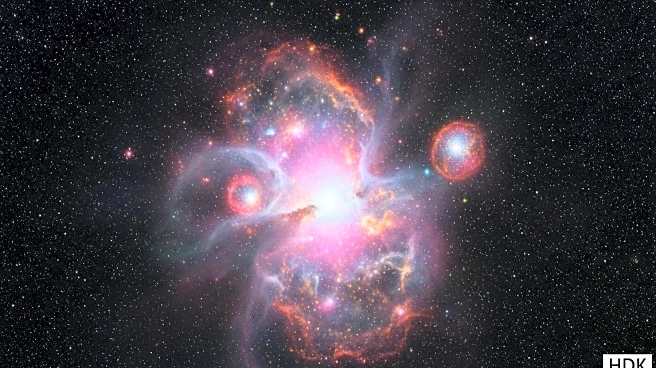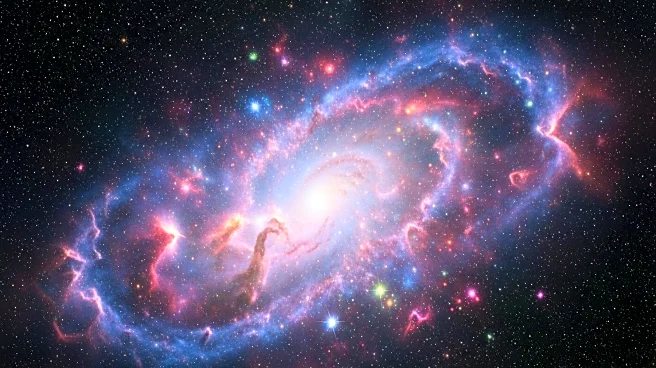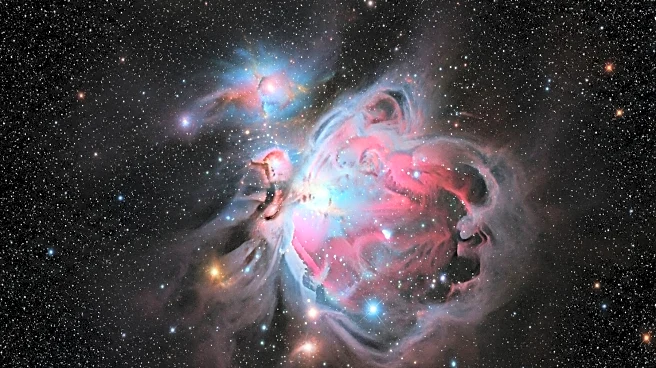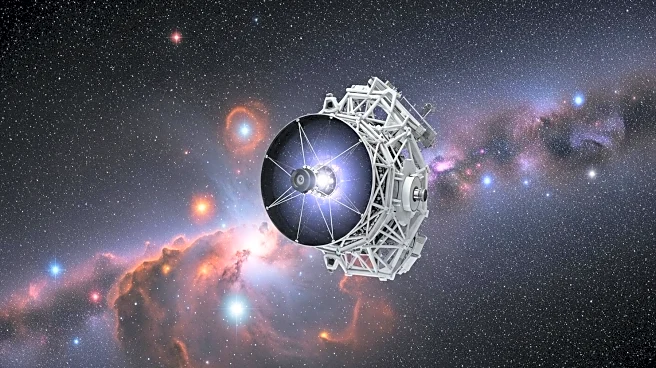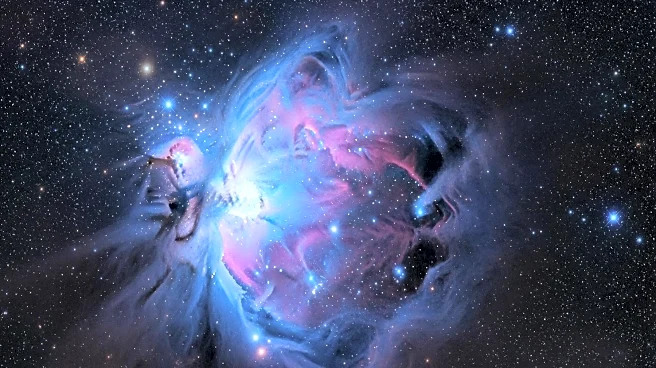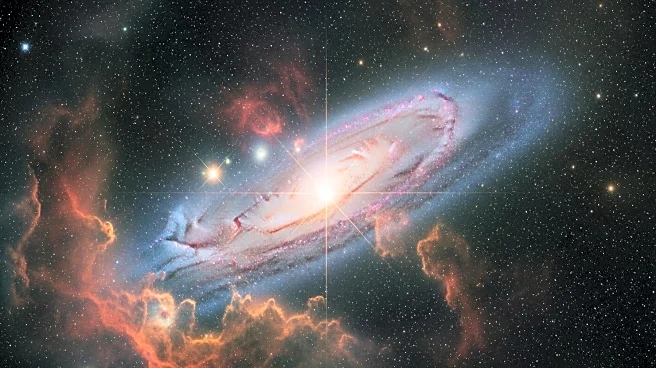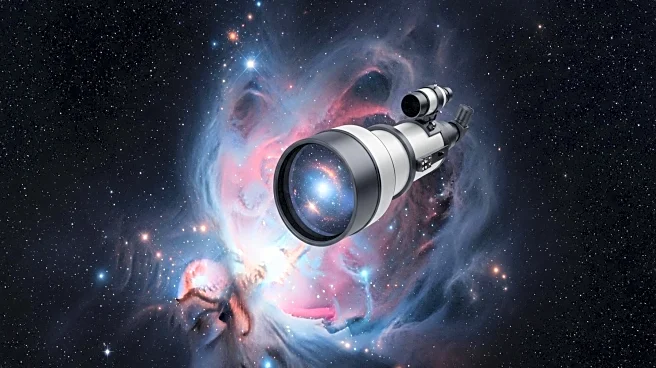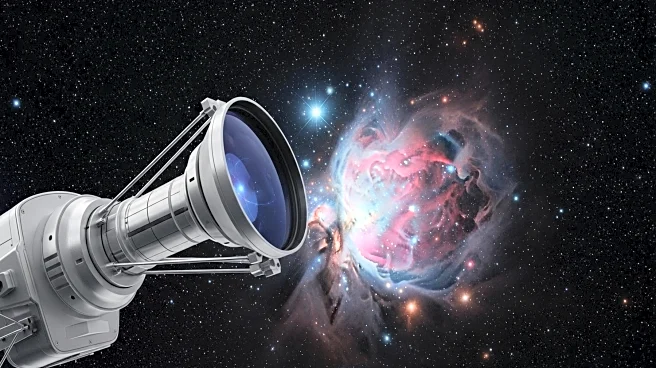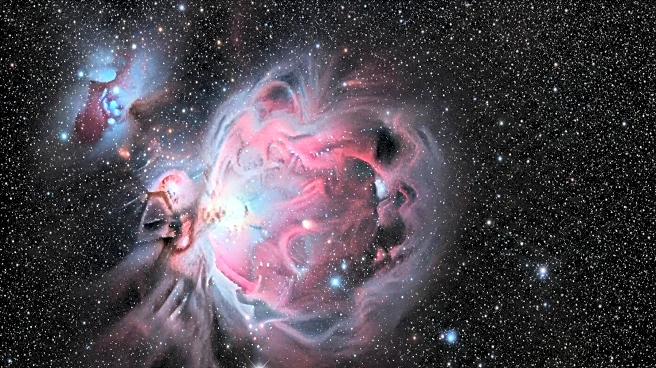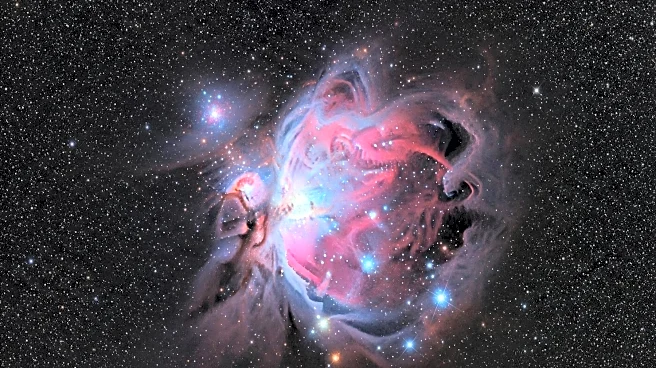What is the story about?
What's Happening?
The James Webb Space Telescope has captured a detailed image of Sagittarius B2, the most massive star-forming cloud in the Milky Way. Located 25,000 light-years from Earth in the constellation Sagittarius, this molecular cloud is near the galaxy's central black hole, Sagittarius A*. The telescope's Near-Infrared Camera and Mid-Infrared Instrument revealed the cloud's structure, showing stars shining between orange clouds of gas and dust. Despite its proximity to the galactic center, Sagittarius B2 accounts for about half of the region's ongoing star formation, a phenomenon that puzzles scientists.
Why It's Important?
The observation of Sagittarius B2 is crucial for understanding star formation in the Milky Way, particularly in the galactic center. The cloud's disproportionate star formation activity compared to its surroundings could provide insights into the processes that govern star birth in dense molecular clouds. This discovery may also influence theories about galaxy evolution and the role of molecular clouds in star formation. The data from the James Webb Space Telescope could help scientists determine the factors contributing to Sagittarius B2's prolific star-forming activity.
What's Next?
Scientists plan to use the new data from the James Webb Space Telescope to investigate how long Sagittarius B2 has been forming stars and whether a specific event triggered its activity. This research could lead to a better understanding of the mechanisms driving star formation in the Milky Way and other galaxies.
AI Generated Content
Do you find this article useful?
